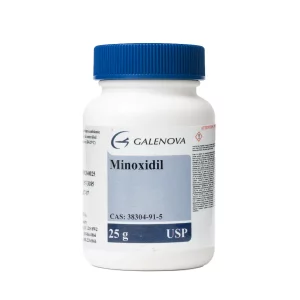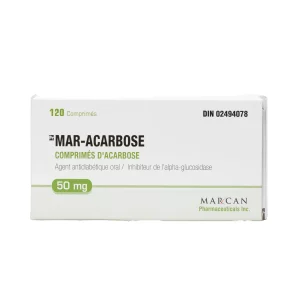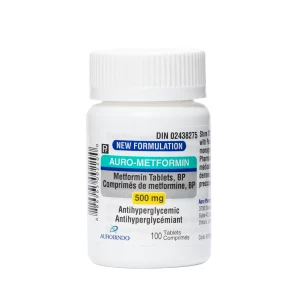Your cart is empty.
Your cart is empty.
Blood sugar spikes can affect your energy and increase the risk of cardiovascular disease and aging. These rapid post-meal glucose surges cause oxidative stress, inflammation, and metabolic dysfunction. Acarbose helps prevent these spikes by blocking carbohydrate-digesting enzymes, creating smoother glucose levels, stable energy, and metabolic protection. Beyond blood sugar control, research shows Acarbose has cognitive benefits for brain health and documents Acarbose’s success story outcomes. Many choose acarbose as part of metabolic and longevity wellness strategies.
This guide explains how acarbose controls blood sugar spikes to support sustained energy, reduce metabolic stress, and promote long-term health.
Blood sugar spikes are rapid increases in glucose levels that occur after eating carbohydrate-containing foods. Normally, glucose is released steadily with controlled insulin responses. When blood sugar rises too quickly, it triggers oxidative stress and inflammation throughout the body, causing energy crashes and long-term metabolic damage.

Acarbose blocks alpha-glucosidase enzymes in the small intestine that break down complex carbohydrates into simple sugars. Originally developed for diabetes management, it slows carbohydrate absorption and prevents rapid glucose entry into the bloodstream. This results in smoother blood sugar patterns and more stable energy levels throughout the day.
Different foods cause varying glucose responses, with refined carbohydrates causing the most dramatic spikes. During digestion, enzymes break down starches into glucose for absorption. Acarbose interrupts this by blocking key enzymes, allowing gradual glucose release and sustained energy without crashes.

Acarbose specifically blocks intestinal alpha-glucosidase enzymes that convert complex carbohydrates to glucose. This slows carbohydrate breakdown, resulting in gradual glucose release into the bloodstream. The mechanism produces smoother blood sugar curves with lower peak levels and shorter spike durations, protecting against metabolic stress.
Studies show acarbose reduces post-meal glucose spikes by over 17% in healthy individuals using just 50 mg doses. Research using continuous glucose monitoring after high-carb meals found significant peak glucose reductions, improved overall glucose patterns, and excellent tolerability across populations and meal types.
Stable blood sugar improves daily energy by preventing fatigue from glucose crashes. Mental clarity and focus are enhanced when the brain receives a consistent glucose supply. Long-term benefits include cardiovascular protection, reduced inflammation, and slower aging linked to improved metabolic function.
For optimal effectiveness, acarbose must be taken with the first bite of carbohydrate-containing meals. Taking it 10-20 minutes before eating can further enhance spike prevention. High-carbohydrate meals show the greatest benefit, and consistent meal timing supports overall blood sugar control throughout the day.
The following dosing information is based on experts’ recommendations and published clinical research. Qualified professionals must make all dosage and treatment decisions. Under no circumstances should acarbose be self-administered or dosages altered without medical supervision.
Research typically uses doses of 25-100 mg taken three times daily with meals. Starting with lower doses (e.g., 25 mg) and gradually increasing them helps minimize digestive side effects. Optimal dosing depends on meal size and carbohydrate content, with individual responses varying.
Using continuous glucose monitors or finger-stick tests can track pre- and post-meal glucose levels. Aim for reduced peak levels and shorter spike durations with acarbose. Ideally, post-meal glucose peaks should remain below 140 mg/dL. Regular monitoring helps optimize dosing and identify which meals benefit most.
Acarbose works best with meals containing complex carbohydrates such as starches and grains. High-carbohydrate meals show the most pronounced spike reduction. Simple sugars are less affected by acarbose’s enzyme-blocking mechanism. Balanced meals with protein and fiber further enhance glucose stability and may reduce required doses.
Post-meal exercise can reduce glucose spikes by increasing muscle glucose uptake. Stress management lowers cortisol-induced glucose elevation. Quality sleep supports insulin sensitivity and metabolism. Staying hydrated helps maintain stable blood sugar and improves acarbose effectiveness.
Unlike medications that increase insulin production, acarbose works locally in the intestines without systemic effects. This targeted mechanism provides spike prevention while maintaining a stable baseline glucose without the risk of hypoglycemia.
People with insulin resistance, prediabetes, or metabolic syndrome gain the most from preventing blood sugar spikes. Those experiencing energy crashes after meals notice immediate benefits. Healthy individuals focused on metabolic health and aging may use acarbose strategically during high-carb meals.
Sustained blood sugar regulation helps reduce glycation damage and inflammation, supporting healthy aging. Cardiovascular protection results from improved endothelial function and reduced oxidative stress. Brain health benefits include enhanced cognitive function and protection against glucose-related neurodegeneration.
Users report steadier energy, less afternoon fatigue, and improved mental clarity. Many experience reduced hunger and cravings with more stable glucose. Athletes and active people use acarbose around carb-heavy meals to maintain consistent energy and performance.
Combine acarbose with lifestyle changes for maximum benefit. Monitor glucose responses to different meals and adjust dosing accordingly. Time acarbose use around high-carbohydrate meals while maintaining balanced eating for optimal long-term metabolic health.
Acarbose begins working with the first dose, showing a measurable spike reduction within 30-60 minutes after meals.
Yes, though acarbose works best with carbohydrate-containing meals and may require dose adjustments for very high-carb foods.
Target post-meal glucose peaks below 140 mg/dL with minimal fluctuation from baseline throughout the day.
Acarbose uniquely prevents spikes without increasing insulin production, offering targeted control with minimal hypoglycemia risk.
Healthy individuals can use low-dose acarbose strategically during high-carb meals for metabolic optimization and spike prevention.
Acarbose works best with complex carbohydrates and starches, showing less effect on simple sugars or low-carb meals.
Bajorek, S. A., Morello, C. M., & Poulson, B. K. (2023). The efficacy and tolerability of intermittent prandial acarbose to reduce glucose spikes in healthy individuals. Diabetes Therapy, 14(3), 567-576.
https://www.researchgate.net/publication/369982708_The_efficacy_and_tolerability_of_intermittent_prandial_acarbose_to_reduce_glucose_spikes_in_healthy_individuals
Hanefeld, M., Cagatay, M., Petrowitsch, T., Neuser, D., Petzinna, D., & Rupp, M. (2004). Acarbose reduces the risk for myocardial infarction in type 2 diabetic patients: Meta-analysis of seven long-term studies. European Heart Journal, 25(1), 10-16.
https://pubmed.ncbi.nlm.nih.gov/14683737/
Hollander, P., Elbein, S. C., Hirsch, I. B., Kelley, D., McGill, J., Taylor, T., Weiss, S. R., Crockett, S. E., Kaplan, R. A., Comstock, J., Lucas, C. P., Lodewick, P. A., Canovatchel, W., Chow, J., & Shamoon, H. (1997). Role of orlistat in the treatment of obese patients with type 2 diabetes. Diabetes Care, 20(7), 1203-1209.
https://pubmed.ncbi.nlm.nih.gov/9702435/
Shimabukuro, M., Higa, N., Chinen, I., Yamakawa, K., & Takasu, N. (2006). Effects of a single administration of acarbose on postprandial glucose excursion and endothelial dysfunction in type 2 diabetic patients. Journal of Clinical Endocrinology & Metabolism, 91(3), 837-842.
https://pubmed.ncbi.nlm.nih.gov/16368744/Van de Laar, F. A., Lucassen, P. L., Akkermans, R. P., Van de Lisdonk, E. H., Rutten, G. E., & Van Weel, C. (2005). α-Glucosidase inhibitors for patients with type 2 diabetes: Results from a Cochrane systematic review and meta-analysis. Diabetes Care, 28(1), 154-163.
https://pubmed.ncbi.nlm.nih.gov/15616251/





Unlock savings on bundles and elevate your online experience today!